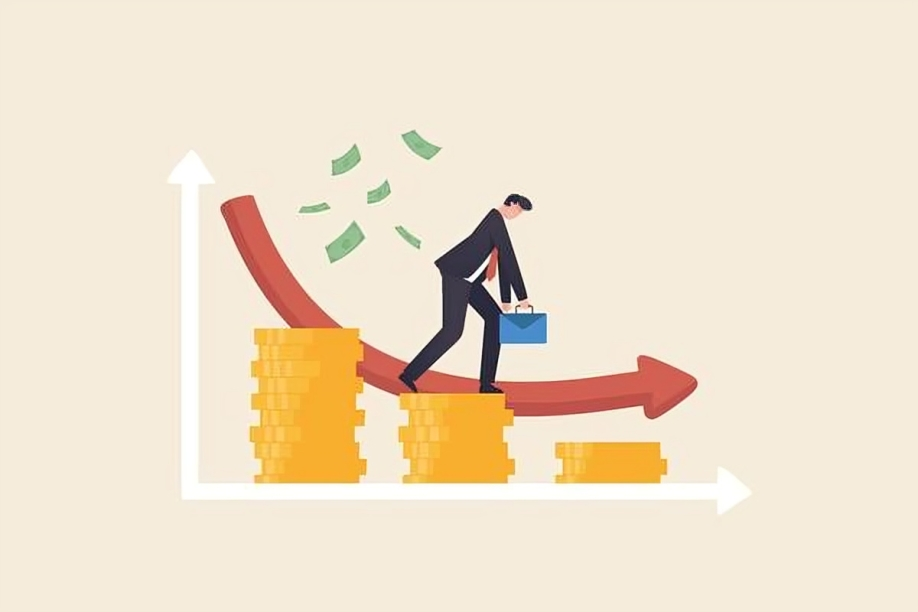In the grand, mysterious world of finance, “bond yields” and “credit market limits” aren’t just technical jargon thrown around by Wall Street hotshots — they’re the invisible forces that shape how governments borrow money, how companies grow, and how investors like you and me earn returns.
If you’re someone navigating the capital markets, eyeing interest rate movements, or trying to make sense of the credit environment, then understanding this duo is not optional — it’s essential. So let’s dive deep into this financial rabbit hole.
-
What Are Bond Yields?
Bond yields are not just “interest rates.” They are much more than a percentage figure sitting next to a government bond. In fact, bond yields are the heartbeat of the global debt market, revealing investor expectations, risk appetite, and future economic outlook.
🔹Yield = Return on a Bond
At its core, a bond yield is the effective return an investor earns from holding a bond. It’s usually expressed as a percentage of the bond’s face value.
For example, if you buy a bond worth ₹1000 and get ₹100 annually in return, the yield is 10%.
But here’s the twist — bond prices fluctuate based on market demand. If that same bond becomes more attractive and its price rises to ₹1100, the yield drops to around 9.09%, even though the payout is the same. This inverse relationship between price and yield is the magic sauce behind yield dynamics.
🔹Different Types of Bond Yields
There’s not just one type of yield — the finance world loves variety:
🔸 Nominal Yield: The coupon rate stated on the bond.
🔸 Current Yield: Annual interest divided by current bond price.
🔸 Yield to Maturity (YTM): The total return if the bond is held until it matures.
🔸 Yield Spread: Difference between yields of two bonds, often indicating credit risk.
Each one tells a different story — and together, they form a powerful narrative about investor sentiment and market movement.
-
What Are Credit Market Limits?
Credit market limits are the boundaries or constraints within which credit is extended in the economy — whether it’s banks giving loans, companies raising bonds, or the government borrowing from the public.
Think of credit market limits as the maximum stretch of a financial rubber band — go beyond that, and things snap. These limits are influenced by multiple factors and dictate how much risk lenders are willing to take on.
🔹The Supply Side: Lenders and Institutions
Credit market limits are often set by:
🔸 Banks’ capital adequacy norms (like Basel III)
🔸 Regulatory authorities (like RBI, Fed)
🔸 Bond rating agencies assessing creditworthiness
🔸 Risk tolerance of institutional investors
These entities collectively decide how much credit should circulate, to whom, and under what terms.
🔹The Demand Side: Borrowers and Investors
Borrowers — from corporations to governments — want credit. But their access is restricted by:
🔸 Credit ratings
🔸 Debt-to-equity ratios
🔸 Past defaults or repayment history
🔸 Market confidence
Even if money is available, it doesn’t mean everyone gets it. Just like a credit card limit, the credit market too has caps for every borrower type.
-
How Bond Yields and Credit Limits Interact
Now let’s bring the two beasts together — bond yields and credit market limits are closely interconnected. They constantly influence and respond to each other.
🔹Rising Bond Yields Can Tighten Credit Markets
When bond yields go up (especially government bonds), they raise the cost of borrowing. That’s because investors demand higher returns to lend money.
Now, companies and even governments have to pay more interest to borrow. This limits the amount of credit they can safely or affordably raise. Result? A tightening of credit availability.
🔹Credit Market Stress Leads to Yield Spikes
If lenders see rising default risks — like during a recession — they pull back from lending. This causes borrowing costs (yields) to spike for riskier entities.
For example, junk bond yields might soar while AAA-rated ones remain stable. This widening yield spread is a clear sign of market tightening and investor fear.
-
Global Examples: Real-World Ripples
🔹The 2008 Financial Crisis
Back in 2008, when banks like Lehman Brothers collapsed, bond yields on safe government bonds plummeted, while yields on corporate debt skyrocketed due to panic. Credit markets froze — companies couldn’t raise funds even at high interest rates.
🔹 The COVID-19 Pandemic
In 2020, governments slashed interest rates to keep yields low. Central banks like the Federal Reserve and RBI injected liquidity to expand credit market limits, saving businesses from collapse. It was a clear dance between manipulating yields and stretching credit capacity.
-
Role of Central Banks in Managing This Balance
Central banks are like the puppet masters of this entire system. Their decisions impact both bond yields and credit availability.
🔹Interest Rate Policies
When RBI or the Fed hikes rates, bond yields rise. When they cut rates, yields fall — making borrowing cheaper and potentially expanding credit availability.
🔹Open Market Operations
Buying or selling government securities directly changes bond prices and yields. Buying bonds = prices rise = yields fall = easier credit. Selling bonds = prices fall = yields rise = tighter credit.
🔹Credit Guidance
During times of crisis, central banks also directly instruct banks to lend to specific sectors (MSMEs, agriculture, etc.) — stretching credit market limits in targeted directions.
-
Implications for Investors
For any investor — retail or institutional — tracking bond yields and credit limits is non-negotiable. It can define your portfolio strategy, risk management, and return expectations.
🔹Portfolio Diversification Strategy
High bond yields often signal better returns from debt instruments — but they could also hint at rising inflation or default risks. Investors need to balance between debt vs equity, short-term vs long-term instruments.
🔹Understanding Yield Curve Inversion
When short-term bond yields become higher than long-term yields, it’s called a yield curve inversion — and it usually signals a coming recession. Smart investors watch these signs to exit risky assets in time.
🔹Credit Risk Assessment
If credit markets tighten, bonds from weaker companies might default. Credit spreads widen. This is when quality bonds outperform high-yield ones, and investors need to shift focus to safety over returns.
-
India-Specific Context: The Desi Dynamics
🔹Government Bonds and RBI Control
In India, the government borrowing program is heavily tied to RBI decisions. RBI often keeps bond yields in check through direct buying/selling to maintain fiscal discipline and inflation control.
🔹PSU Banks and Credit Flow
Public Sector Banks play a massive role in India’s credit market. If they get cautious, the whole MSME and startup sector feels the pinch. Their lending decisions are influenced by capital norms, political pressure, and bond market signals.
🔹Credit Market Limits in Rural Economy
NBFCs and cooperative banks often stretch the credit boundaries in rural India. When bond yields rise, their cost of borrowing goes up, leading to rural credit stress, especially in agriculture-heavy states.
🔹 Final Verdict: Why This Topic Matters More Than Ever
Bond yields and credit market limits aren’t just abstract theories for finance nerds. They are economic indicators, policy tools, and risk barometers all rolled into one.
From your home loan interest rate to the funds raised by unicorn startups, these two factors silently control the background music of the entire financial system.
Whether you’re a policy maker, an investor, or a business leader — mastering these concepts could be your edge in making smarter, timely decisions.
Want the blog as a downloadable doc or need an image or SEO meta for this? Just say the word, Rohit 💼🔥




